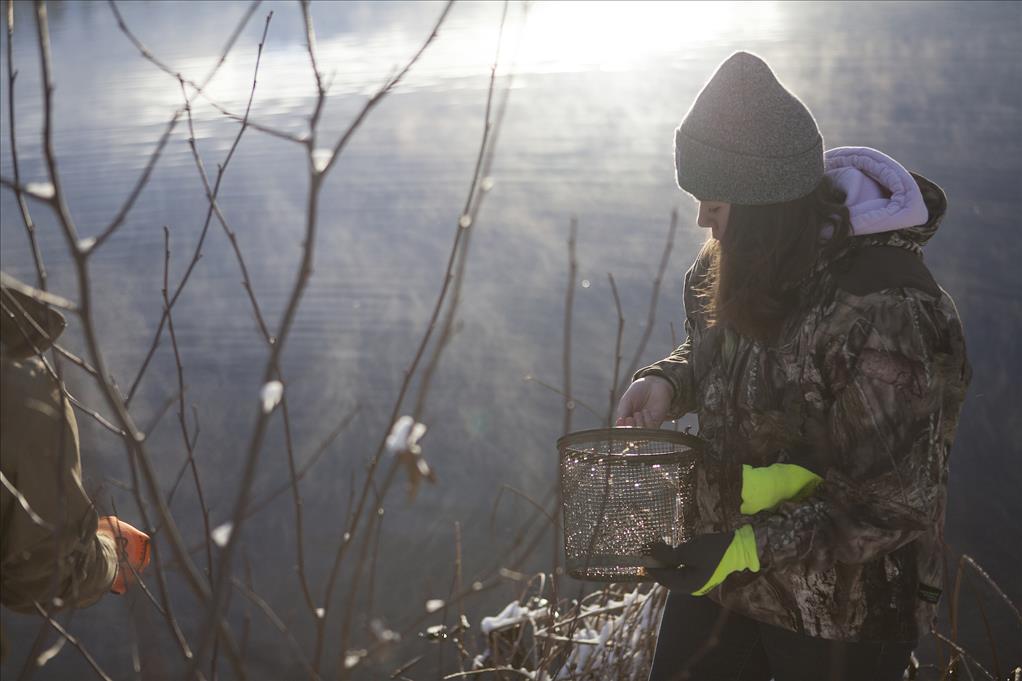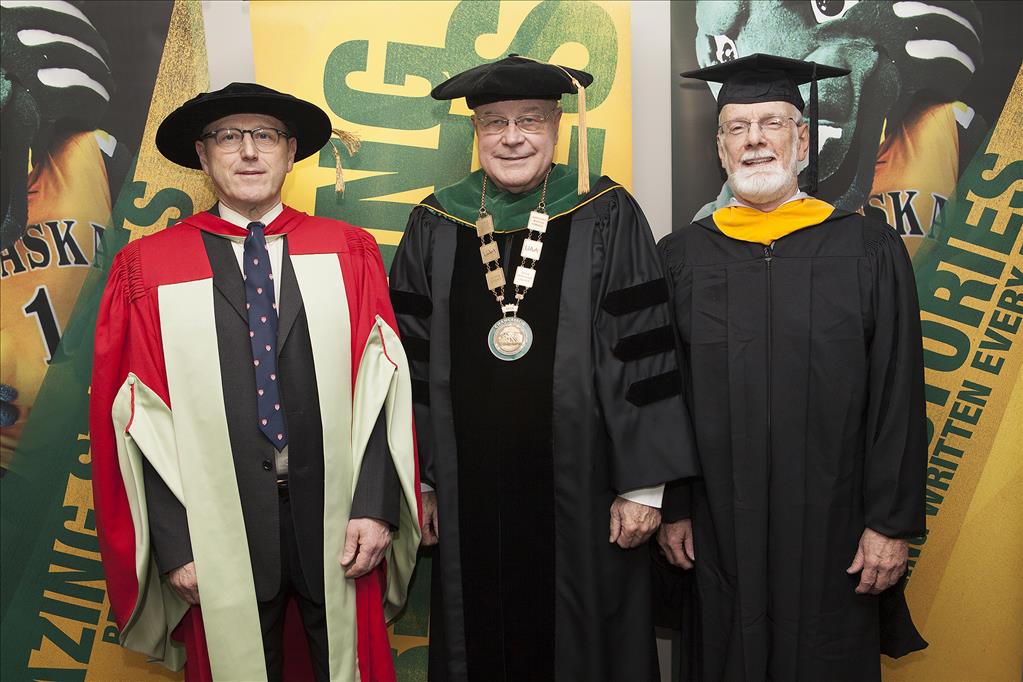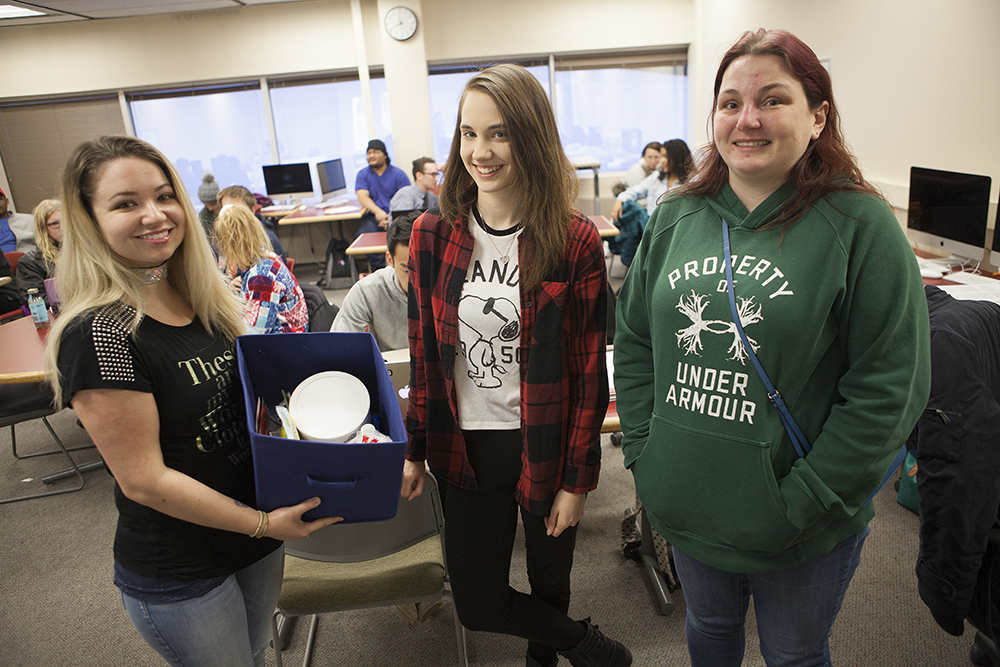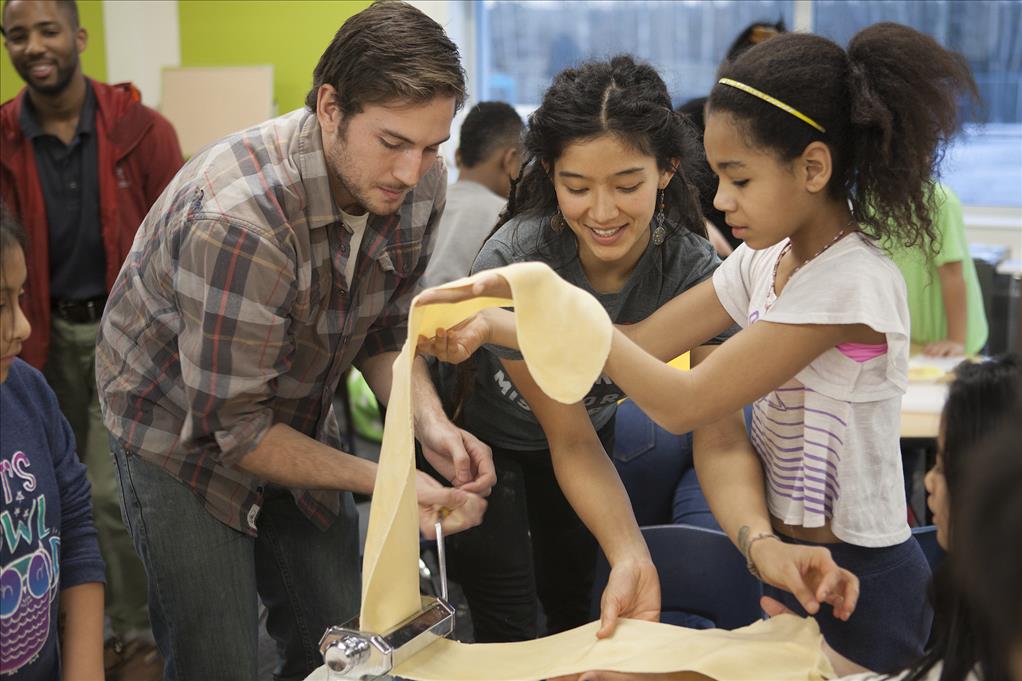Improving health literacy in diverse Anchorage
by joey |
For most Americans, the modern medical world is a daunting place. And that's even if you speak English.
But Anchorage is home to at least 90 languages, from Danish to Dinka.
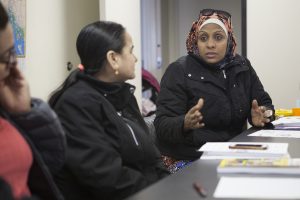
Zabeeba Mohamed, from Ethiopia, explains the Peer Language Navigator program, part of an Anchorage collaborative that helps refugees and immigrants obtain and understand health information in Anchorage. (Photo by Phil Hall / University of Alaska Anchorage)
Imagine trying to navigate a dense health insurance document with only a third-grade grasp of the language. At that point, even reading a nutritional label at the grocery store can be overwhelming.
Add in cultural differences and a foreign environment and there's a host of health challenges affecting Anchorage's diverse population. Thankfully, a local consortium of agencies and advocates is working to make health information more accessible and useful to the city's thousands of English language learners.
Launched in 2008, the Anchorage Health Literacy Collaborative (TAHLC) brings together health- and language-focused professionals, including representatives from UAA, Alaska Literacy Program, YWCA and Providence Hospital. TAHLC focuses on health literacy-the ability to obtain, understand and use health care information. Each year, the collaborative trains women from diverse language groups to better understand and share health information across Anchorage.
The program has gained national attention, won national awards, and moved beyond simply explaining the American health system. Now, it's out to change it.
Ice cream test
In 2008, Rhonda Johnson, UAA professor of public health, connected with the Alaska Literacy Program (ALP), a home for adult English language classes. Rhonda was researching cancer communication with Alaskan women, as part of a UAA Center for Community Engagement and Learning mini-grant. She provided several adult language learners a simple health literacy quiz-six questions on the nutritional information from an ice cream label. All the students scored a zero out of six.
"I was surprised, but it's a manifestation of how serious this problem is," Rhonda noted. So she, ALP Executive Director Polly Smith and several others collaborated to fix the problem, recognizing a failed test reflected on the shortcomings of the health system, not the patient. "If we don't explain things well, it's our problem, not yours," Rhonda explained.
Adapting to life in Anchorage
Though the ice cream results spurred TAHLC, the collaborative is far more than just a one-direction response. Health is a conversation, and the TAHLC partners are all ears.
Get ready for some acronyms: every year since 2009, TAHLC has trained at least four peer language navigators, or PLNs, nominated by the English teachers at ALP. These PLNs are women with a relatively high command of the English language who can serve as a point of contact within their community for health information. Since the program launched, PLNs have represented an impressively diverse range of languages, including Mandarin, Wolof and Samoan. As the refugee and immigrant population changes in Anchorage, the PLNs shift also. A few years ago, TAHLC emphasized Arabic, Lao and Hmong languages. Lately, there's a turn to Sudanese, Nuer and Somali.
Through a few local grants awarded to TAHLC, the women receive a small stipend for their work. They also get to direct the conversation as their communities adjust to life in Alaska. The range of topics covered-diabetes, stress relief, and yes, nutritional labels-is nearly as diverse as the languages represented.

PLNs Marisol Vargas, Tuka Mishra, and Zabeeba Mohamed meet with Linda Shepard from Providence at the Alaska Literacy Program offices. (Photo by Phil Hall / University of Alaska Anchorage)
"All the projects come from what the PLNs think are most important for their community," explained Linda Shepard, a community health coordinator at Providence and an active leader in PLN projects.
And since the PLNs direct the conversation, they're even more empowered to share the information: at barbecues, after church, even when they overhear someone speaking their language at the grocery store.
Zabeeba Mohamed, an Arabic- and Amharic-speaking PLN, wanted to learn about emergency preparedness kits, an unfamiliar concept in her Ethiopian community. So Linda arranged a shopping trip to Wal-Mart. "We didn't know about this stuff before. Thankfully, Linda showed us the stuff to buy, which radio, which batteries," Zabeeba noted, adding that she'd never even heard of waterproof matches before that day.
Marisol Vargas, a PLN from Mexico, wanted to understand earthquake responses. "In my country, when you have an earthquake you run outside," she said. "But here, you can't run out. The construction is totally different, the environment is different." After learning the right response for Alaska, Marisol was able to translate the information for her community. "It's a great program," Marisol added.
And it's a great program for UAA as well. Students in nursing, psychology, dental hygiene and health sciences have all worked with the PLNs on various projects. Each year, a graduate student in public health works with the PLN program, hiring and training in the fall, evaluating and planning in the spring.
Local benefits, national attention
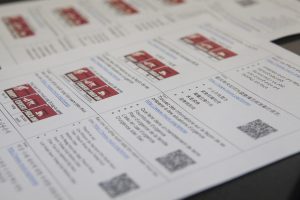
PLNs and the Anchorage emergency preparedness team have translated information into online and print resources for 11 language communities so far. (Photo by Phil Hall / University of Alaska Anchorage)
The response to TAHLC has been overwhelmingly positive both in Anchorage and beyond.
For example, PLNs have been working with the Anchorage municipality's emergency management team to translate information into simple, direct notecards and online resources. The information is now available in Nepali, Tagalog, French and 10 others. "Nowhere else in the U.S. will they have this information in some of these languages," Linda added.
Nationally, the PLN program is in the spotlight. In 2013, TAHLC received awards from the Institute for Healthcare Advancement and Commission on Adult Basic Education. More recently, TAHLC won two rounds of funding from the regional National Library of Medicine.
Another glowing recognition came from Cecilia Doak, who, along with her late husband, Leonard, is considered one of the earliest champions of health literacy. After hearing TAHLC members present on the PLN program at a national conference, Cecilia was so impressed by the health literacy efforts in Alaska that she moved the Leonard Doak Memorial Scholarship in Health Literacy from another university to UAA.
Jeni Rogers, a Master of Public Health student, is the current recipient of the Doak Scholarship. An English teacher at ALP, Jeni's interactions with visiting public health students convinced her to seek a master's degree for herself. "I didn't even know about public health and the M.P.H. degree until I started working on the health literacy projects," she admits.
But she now realizes it's always been part of her life. As a kid, she served as a mediator between American doctors and her Korean mother, translating dense medical information at a young age.
"A lot of health care providers talk at this level that is very hard to understand, with advanced vocabulary and speed," she said. Plus there's the cultural context. Not everyone is comfortable making requests of an authority figure. "With that attitude you can't get accurate health information," Jeni noted. "That's a conversation we have with our PLNs. It's OK to ask them to slow down; you can ask more questions."
Hopefully, the more patients ask for clear information, the more health care providers will adapt their communication to the needs of Anchorage's diverse audience. The end result, ideally, is systemic change toward health literacy.
Jeni is optimistic about so many elements of the PLN program-the partnerships that fund it, the voice it provides refugees and recent immigrants, the diverse communities it represents. Then again, there's the personal connection, too. Now that she can't make every appointment, she encourages her mother to push for information on her level.
"A lot of the community realizes we have to give people this information they can understand and the opportunity to make better health decisions," Jeni said. "That's why health literacy is so important." And it's why she is excited about the doors her public health degree will open in a diverse city like Anchorage.
"It's really a good mission," she said. "I'm glad that I'm a part of it."
For more information on TAHLC, or if you would like to get involved, please contact Dr. Johnson at Rhonda.Johnson@uaa.alaska.edu or Jeni Rogers at alp.jrogers@ak.net.
Written by J. Besl, UAA Office of University Advancement
 "Improving health literacy in diverse Anchorage" is licensed under a Creative Commons Attribution-NonCommercial 4.0 International License.
"Improving health literacy in diverse Anchorage" is licensed under a Creative Commons Attribution-NonCommercial 4.0 International License.










